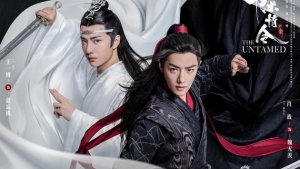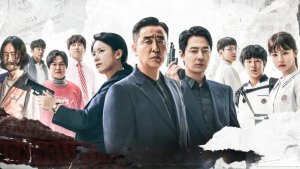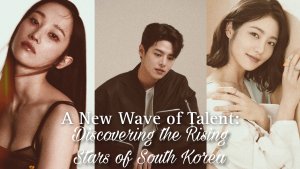 The Art of Framing: The Untamed Edition
The Art of Framing: The Untamed Edition
Today, I wanted to bring you a somewhat different perspective on the dramas we all love.
The way a scene is shot can say a whole lot about the moment, the emotions of the characters, the feeling it needs to envoke, etc. If done correctly, it is a potent tool to give your viewers information without voicing it.
So, today I am going to do a brief light and colour study for the film Rurouni Kenshin. The film is beautifully shot, and while watching it, I couldn't help but be excited about the artful way it uses its colour schemes and lighting.
I do want to warn before continuing: there are going to be minor spoilers in this article.
Before we start, let's make some base assumptions that will help us form a proper analysis:
1) Darker and colder colour palettes, dull colours, pronounced shadows, and restricted light sources usually represent a terrible situation, a gloomy emotional state, danger, etc.
2) Warmer, brighter colour palettes, vibrant colours, soft shadows, and an abundance of light usually represent a good situation, a healthy emotional state, a safe space, etc.

3) A burst of light in an otherwise darker frame has a lot of meaning. It usually signifies a key element, marks the "good guys" from the "bad guys," points to the importance of that specific thing/person, etc.
4) In a character-driven piece, the above points often serve to highlight how the CHARACTER feels and sees those things. The same scene can be shot in several different ways, depending on the character, and a good film-maker makes use of this.
Let's take a look at the opening sequence as an example of the above

Look at the colouring scheme of this shot. The colours are very cool and dull. It's mostly blue, with bursts of greyish smoke. This shot is not "alive." The lights and shadows merge and spill over, mixing and intertwining. You can't really tell one group from another, making it impossible to tell who we're meant to cheer for. Because we're not.
There are many ways to shoot a war, and it often depends on your character and how he feels about it. And we definitely see the war through Kenshin's eyes in this sequence.
But what does this tell us? Well, two things. First, the lack of colour indicates this war is viewed as something that takes life, as something that leaches all colour and makes it hard to tell anything apart anymore. But also, that war is grey. There is no particular right or wrong in this.
In this setting, we are introduced to two characters, Himura Kenshin and Saito Hajime, in very different visual ways, despite both of them being introduced via the action of killing. But do they both view killing in the same way? I wonder. Let's look at them side by side. Pay attention to the colours and lighting of these shots... how do they make you feel?

Kenshin's introduction shows us the one splash of colour in this sequence... the blood on his sword. Look at how it pops out on the grey-blue colour scheme! That is the only vibrant, eye-catching colour in this opening. What does that say about him? His frame of mind? What do the darker shades of this shot tell you? The way his face is the last thing we see and barely because it is so heavily shadowed.
Now further consider this shot in comparison to this one, which is happening within the same space and parameters:

Can you see the vast differences? What do the intense light breaking around Saito and the generally lighter tones of his intro tell you about him? Is this a person who sees himself as grey? Does this person struggle with who he is and what he does? Is he ashamed, or is he proud?
What do you guys think?
If I told you one forsakes the sword and the other becomes a policeman, which one would you think did what? Just based on these two shots. With only these visual devices, you can learn so much of the character... all without using a single word.
Light & Color as an Emotional Representation
After we practiced a little with that, I want to do a little exercise with you. A game, if you will.
I'm going to give you 3 different shots of the same person and 3 emotional scenarios. Please tell me in the comments which emotional scenario do you think fits which shot.
1.
2.
3.
Things to look for: the colour palette and the vibrancy of the colours. The tones of the colour (cool? warm? neutral?) How is the character lit? (Is she shadowed? Is she bathed? Is she softly surrounded by light?)
Our emotional options:
a) The character is at their lowest point in life. They are experiencing despair, self-hatred. They feel trapped.
b) The character is attempting to escape a dark life they never wished for. They are taking the first step towards hope.
c) The character is in the right spot in their life, happy and hopeful.
So? Which is which? Even if you know nothing about this story, something tells me you can understand.
Symbolism in Light
I know I've been rambling on for ages, but I did want to give you two more significant examples of how light in shots can give you even MORE information than we have seen so far, and how sunlight, torchlight, and lamp light actually all have different symbolism and weight in a cinematic story.
The two following shots are of the same scene.

In one, we see a blinding beam of light bursting through the trees, engulfing a character (Kaoru) and bathing her entirely while the other character (Jie) remains within the shadows. If you watch the full scene, you would even see how the beam of light recedes as he moves closer -- the light never touches him.
In the other, a character (Kenshin) is entering the scene. There is a torch of fire at the corner of the shot. It flickers in and out, the intense smoke covering the whole shot and making the image unclear and dancing. It's not the quality of the gif that makes the shot blurry.

So, what do these tell us? Aside from the obvious "light = good" and "darkness = bad", there is an additional emotional impact here. Take a second to consider the implications of "fire" and what being literally distorted by fire might mean. Consider the fact the movie mostly represents Kenshin's emotional state. What does that bright, blinding beam of light represent, especially when threatened by shadows?
The answers? Fire represents rage. When a character enters a scene like that, literally blurred by fire, it's a manifestation of their emotional state. This symbolizes burning, uncontrollable rage. The kind you can't see straight because of it. It's a theme that continues throughout the scene - every time Kenshin's rage grows, flames flicker in.
What about that sunlight bursting through? Sunlight is often considered the purest, cleanest form of light. It washes everything, it warms you up, it's the thing you see when a storm breaks, or the night ends, it's what awaits you at the end of a dark tunnel.
We don't need the movie to tell us how much Kaoru means to Kenshin. We see it on screen: she is the light in his darkness. She is everything he is not. Her being threatened brings on the shot of him entering full of rage. It's a beautiful, visual shot that symbolizes the weight of the character, her importance in the main character's life, and the way she is seen by him.
And I, for one, find it fascinating. What about you?
I hope you enjoyed this in-depth look into Light & Color in the movie Rurouni Kenshin!
I would love to hear your thoughts on this matter; your answers for the game, whether you notice and enjoy these devices. Or if any shots come to mind when you think of lighting & colouring?
P.S.: Thank you for allowing me to speak on this topic. :)










